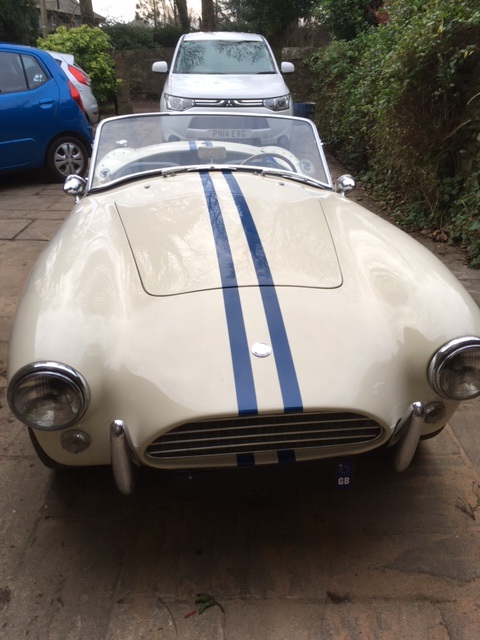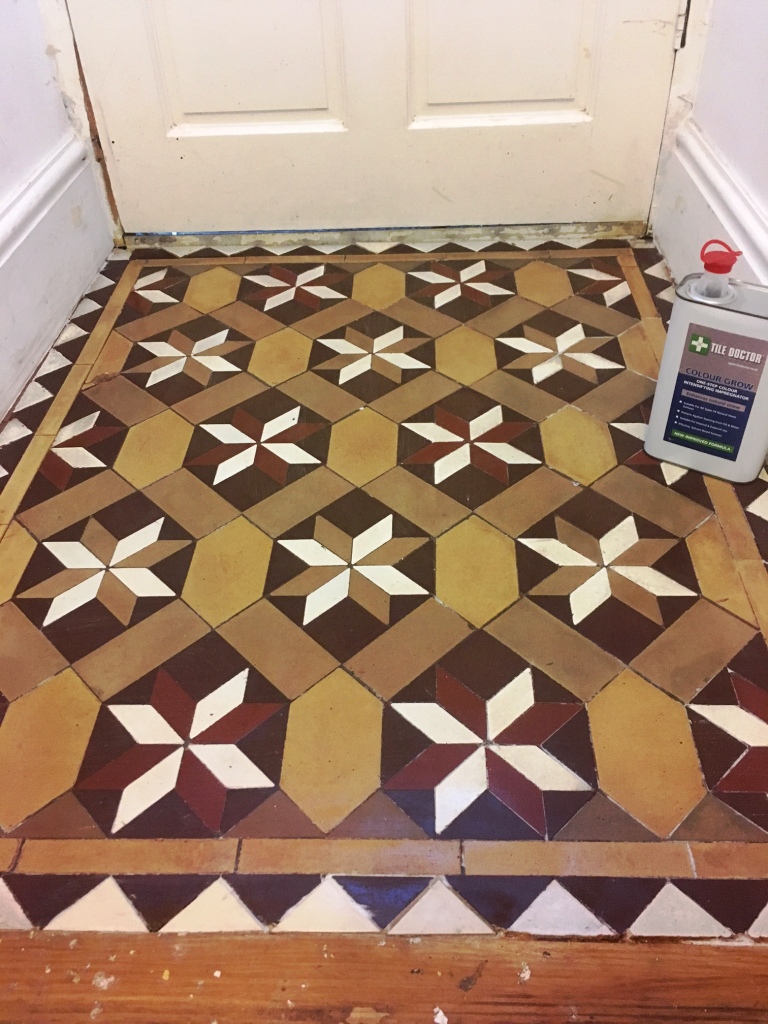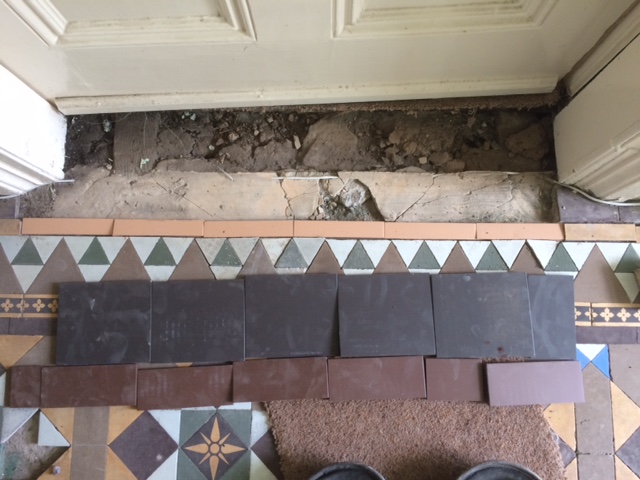Original Red & Black Victorian Tiled Floor Fully Restored in Lancaster
This old Red and Black Victorian tiled floor at a property in Lancaster was in a bit of a state and had numerous issues that needed resolving as part of the restoration. This included dealing with an old, tiled fireplace hearth, but as the fireplace had been removed years ago it was now a bit of an eyesore as it did not match the rest of the floor.

Additionally, some of the tiles had been ripped up along one edge of the floor to make way for a gas pipe, but this was now capped off. This area would need replacement tiles matching the original to be sourced and put in place.

Lastly the whole Quarry tiles floor had previously been covered in carpet so there were adhesive stains all over the floor, not to mention the ingrain dirt that had accumulated in the tile itself.

We specialise in restoring old Victorian tiled floors like this one and you will find lots of examples of this sort of work on our website. Our service is quite unique as we generally find other companies either offer a cleaning service or just a repair service; Tile Doctors on the other hand offer a full solution.
Removing Carpet Adhesive from a Victorian Tiled Floor
The first job was to remove the carpet glue and old splashes of paint which we tackled by spraying the floor with a strong dilution of Tile Doctor Remove and Go. Designed for use on tile and stone this product is a coatings remover combined with a cleaning agent. This was left to soak into the tiles for ten minutes before it was worked in with a coarse 200-grit pad fitted to a rotary buffer machine. The floor was rinsed with water and then an industrial wet vacuum extracted all the soils away.
Stubborn marks were retreated and then once happy with the initial clean the tiles were treated to an acid rinse using Tile Doctor Grout Clean-Up. Not only does this product remove old grout smears from the tiles it also helps to restore the natural pH of the floor after the use of an alkaline cleaner such as Remove and Go. The acid in this product also slightly etches the clay tile which will allow for a better bond with the sealer later.
Lastly, I had noticed evidence of efflorescent salt staining which is a common issue on old Victorian floors that don’t have a damp proof membrane. It’s caused by salts being carried up through the floor as moisture evaporates from the subfloor and results in unsightly white salt deposits being left on the surface of the tile. An acidic cleaning product such as Grout Clean-up can counter the alkaline salts but for best results, we like to use Tile Doctor Acid Gel, it’s a slightly stronger product and being a gel allows it to sit in place for longer. After finishing the floor, it was given another rinse with water to remove any trace of product and then dried as much as possible with the wet vacuum.
Sealing a Victorian Tiled Floor
A lot of water was used in the cleaning process, so the floor was left for four days before returning to add the sealer. For best results, It’s not a good idea to apply sealer to a damp floor and to avoid any doubt use a damp meter to obtain a moisture reading and compare it with one taken before cleaning.
To seal the floor two coats of Tile Doctor Colour Grow were applied, this is a fully breathable sealer and if the salts do come back this sealer will let the efflorescence breathe through to the surface where it can be easily mopped off the floor, we use Tile Doctor Concentrated Neutral Cleaner for this.

In the after pictures, you will see the difference we have made to this floor, bringing it back to its former glory, the house was built in 1901 so the floor is original and that makes it 120 years old. not all floors would look this good after that length of time.

Professional Restoration of a Victorian Tiled Floor in Lancashire
Original Red & Black Victorian Tiled Floor Fully Restored in Lancaster Read More »

































